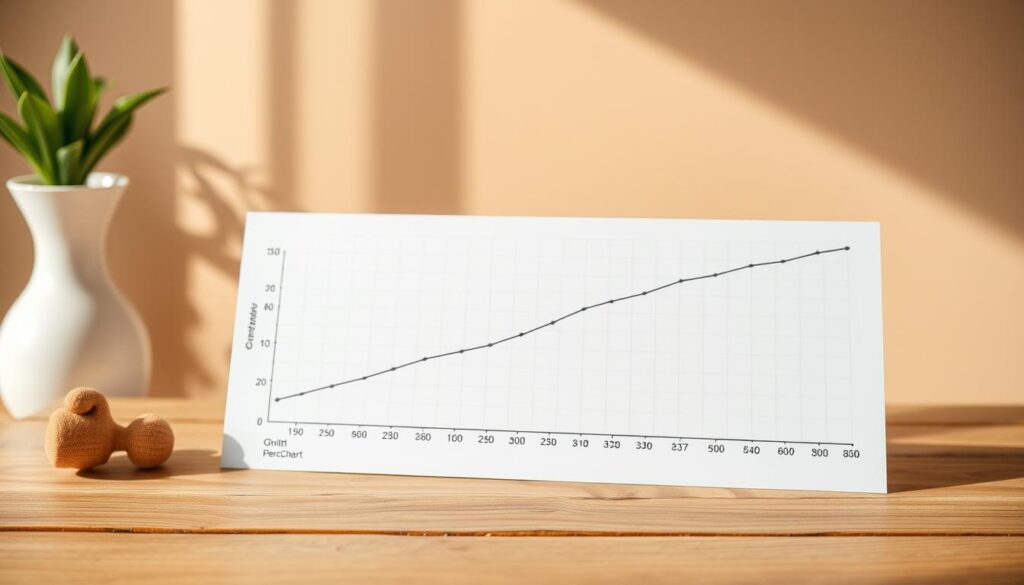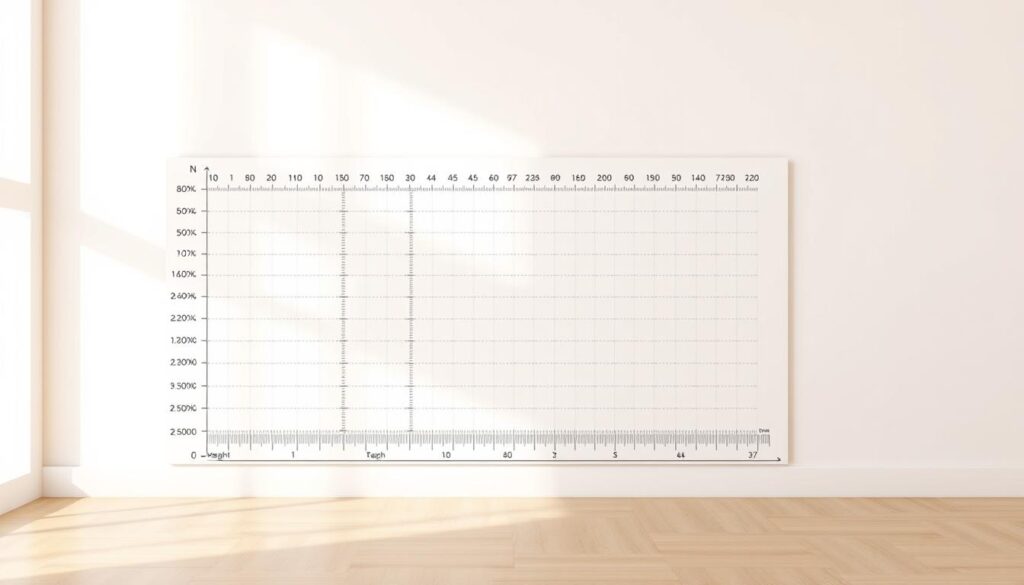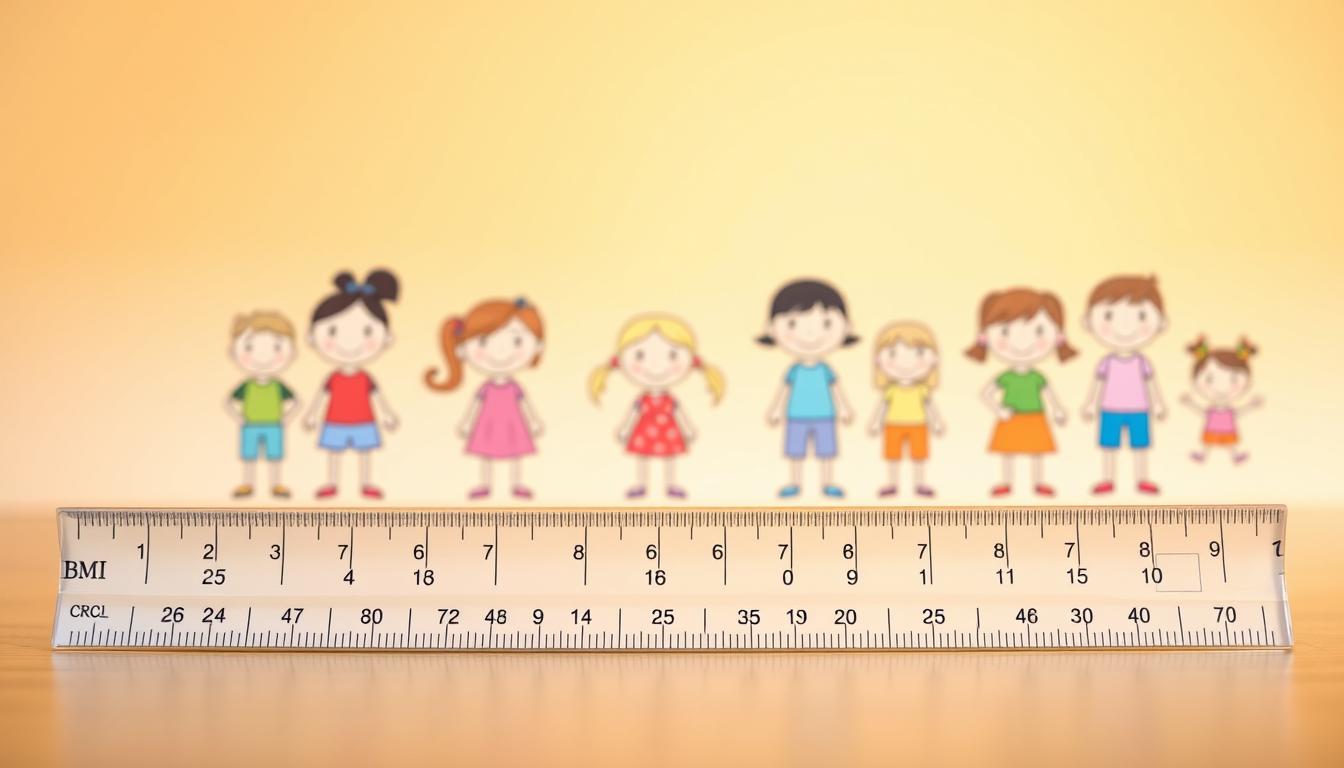Is your child’s growth on track? Many parents assume weight alone tells the full story, but height, age, and gender play equally critical roles in understanding a young one’s health. Tracking body mass index (BMI) offers a clearer picture, and our guide simplifies how to use this tool effectively.
Body mass index measures weight relative to height, adjusted for developmental stages. For children under 10, these adjustments ensure results reflect growth patterns accurately. Our tool accounts for these factors, delivering insights tailored to boys and girls. Precise measurements matter—even small errors in height or weight can skew outcomes.
It’s vital to remember BMI isn’t a diagnosis. Instead, it flags potential concerns, like rapid weight changes, prompting further discussion with healthcare providers. For families seeking actionable steps after screening, our health strategies guide offers science-backed methods to support balanced growth.
Key Takeaways
- BMI evaluates weight relative to height, adjusted for age and gender in children.
- Accurate height and weight measurements are essential for reliable results.
- This tool serves as a screening method, not a definitive health assessment.
- Growth patterns differ between boys and girls, requiring tailored calculations.
- Combining BMI insights with professional guidance ensures holistic health support.
Introduction to BMI and Its Importance for Children
Assessing a child’s health goes beyond simple weight checks. Body Mass Index evaluates how a young person’s weight relates to their height while accounting for developmental phases. This metric helps identify whether their physical progress aligns with typical growth trajectories for their age and gender.

What Is Body Mass Index?
This measurement uses a formula: weight in pounds divided by height in inches squared, multiplied by 703. However, pediatricians adjust results based on age and biological sex, since muscle mass and bone density differ between boys and girls. For example, a 7-year-old’s healthy range won’t match a 9-year-old’s, even if their weight height ratios appear similar.
Why Tracking Matters
Regular checks reveal patterns. A child consistently in the 60th percentile shows steady development, while sudden jumps might signal concerns. The American Academy of Pediatrics recommends annual screenings starting at age 2. Combined with growth charts, these trends help caregivers spot deviations early.
Key reasons to monitor include:
- Identifying if growth rates match peers
- Detecting underweight or overweight tendencies
- Guiding nutrition and activity adjustments
Remember, percentiles contextualize numbers. A 90th-percentile result doesn’t automatically mean obesity—it indicates a child weighs more than 90% of others their age and sex. Always pair data with professional insights for a complete health picture.
How to Measure and Calculate BMI for Kids
Ever wondered why two children with the same weight can have different health assessments? Precise measurements of height and weight form the foundation of reliable calculations. Let’s break down the process to ensure accuracy.

Accurate Measurement of Height and Weight
Start by having your child stand barefoot on hard flooring against a wall. Use a flat ruler to mark the top of their head, then measure from the floor to the mark with a metal tape. Keep their heels, shoulders, and head touching the wall for consistency.
For weight, use a digital scale placed on a flat surface. Remove heavy clothing and shoes. Record the measurement in kilograms for manual calculations—convert pounds by dividing by 2.205 if needed.
Steps to Calculate the BMI Manually
Follow these steps:
- Divide weight in kilograms by height in meters squared (kg/m²).
- Multiply the result by 703 if using pounds and inches.
- Compare the number to sex-specific growth charts adjusted for age.
| Measurement Method | Manual Calculation | Digital Tool |
|---|---|---|
| Time Required | 5-7 minutes | Under 1 minute |
| Error Risk | High (human math errors) | Low (automated) |
| Age/Sex Adjustments | Manual chart reference needed | Built into results |
While manual methods work, our tool streamlines the process. It automatically applies age and gender adjustments, reducing mistakes. Whether you calculate by hand or digitally, always repeat measurements monthly to track trends reliably.
Using the BMI calculator for kids under 10
Parents often ask how growth charts translate to real-world health insights. Proper use of screening tools requires precise data entry and thoughtful interpretation. Let’s explore how to maximize accuracy when assessing physical development.

Capturing Reliable Measurements
Begin with fresh measurements. Use a digital scale on hard flooring and remove bulky clothing. For height, ensure shoes are off and the child stands straight against a wall. Even a half-inch error can shift percentile rankings significantly.
Our system automatically adjusts for age and biological sex. An 8-year-old girl weighing 58 pounds at 4’2″ would receive different feedback than a boy of the same measurements. These refinements ensure results reflect typical healthy weight ranges for each group.
Decoding Percentile Outcomes
After entering data, the tool compares numbers against CDC benchmarks. A result between the 5th and 85th percentiles generally suggests child development aligns with peers. Values outside this range warrant discussion with professionals, not alarm.
| Percentile Range | Interpretation | Next Steps |
|---|---|---|
| Below 5th | Potential underweight | Nutrition evaluation |
| 5th – 85th | Healthy weight | Annual checkups |
| 85th – 95th | Overweight | Activity adjustments |
| Above 95th | Obese | Medical consultation |
Regular tracking matters most. A single result offers a snapshot, while trends reveal whether child healthy patterns are stable. Pair these insights with pediatrician visits for a complete picture of physical well-being.
Charting and Tracking Your Child’s Growth
Growth charts offer more than just numbers—they tell a story. By plotting measurements over time, families gain insights into developmental patterns that single snapshots miss. Regular tracking helps identify whether a child’s mass aligns with their height and age, providing early clues about potential health shifts.
Understanding BMI Percentiles and Growth Charts
CDC growth charts compare children to peers of the same sex and weight age. A 6-year-old boy at the 70th percentile weighs more than 70% of boys his age but less than 30%. These comparisons account for natural growth spurts and plateaus.
| Age | Healthy Weight Height Range | Action Threshold |
|---|---|---|
| 4-6 years | 36-46 lbs / 39-45 inches | Below 5th or above 85th percentile |
| 7-9 years | 48-72 lbs / 45-52 inches | Sudden 15% percentile shift |
Identifying Healthy Weight Ranges
Two factors determine ideal ranges: current height and biological sex. Girls often have higher body fat percentages than boys at similar ages, which charts reflect. Measurements every three months capture trends without overwhelming families.
Tracking Changes Over Time
Consistency matters. A gradual climb from the 40th to 60th percentile over two years typically signals steady growth. But a six-month jump to the 90th percentile warrants a health care provider consultation. Documenting meals, activity levels, and sleep patterns alongside measurements adds context.
Key monitoring tips:
- Use the same scale and measuring tape each time
- Note growth spurts or illnesses affecting weight
- Share charts during pediatric visits for expert analysis
Common Misconceptions and Expert Advice
Understanding growth metrics often leads to confusion about their purpose and limitations. Many caregivers mistake these numbers for definitive health verdicts rather than screening indicators. Let’s separate fact from fiction with guidance from leading health professionals.
BMI as a Screening Tool, Not a Diagnostic Measure
Body mass index helps identify potential concerns—it doesn’t confirm diagnoses. The Centers for Disease Control and Prevention emphasizes its role in early detection, not final assessments. For example, athletes might show higher values due to muscle mass rather than excess fat.
Key points to remember:
- Results above the 85th percentile healthy range signal a need for deeper evaluation
- Trends over time matter more than single measurements
- Health assessment tools complement—but don’t replace—medical expertise
Consulting Health Care Providers for Concerns
Persistent percentile shifts or unusual chart patterns warrant professional input. A care provider might order blood tests, dietary reviews, or activity assessments to uncover underlying factors. The American Academy of Pediatrics advises involving health care teams when results suggest metabolic risks or nutritional imbalances.
When to schedule a consultation:
- Consistent readings above the 95th percentile
- Sudden 20%+ percentile jumps within six months
- Discrepancies between growth charts and observable energy levels
Preventive strategies from disease control experts highlight early action. Pairing regular screenings with expert guidance creates a safety net for developing bodies. Trust tools to flag possibilities—and professionals to confirm solutions.
Conclusion
Monitoring a young one’s development requires both precision and perspective. Tracking body measurements against standardized charts helps families spot meaningful changes early. Regular checks over years reveal patterns that single readings might miss.
Focus on consistency. Use the same tools each time to measure height and weight. Compare results to child healthy weight ranges—typically between the 5th and 85th percentiles. Small shifts in a person’s growth curve often carry more weight than isolated numbers.
Share trends with pediatricians during checkups. They’ll assess whether adjustments to nutrition or activity levels might support balanced development. Remember, every child’s body follows its own timeline.
Our screening tool simplifies this process, turning complex data into clear insights. Pair it with professional guidance to create a complete picture of physical well-being through the years. Steady monitoring and trusted charts remain your best allies in nurturing child healthy weight outcomes.

